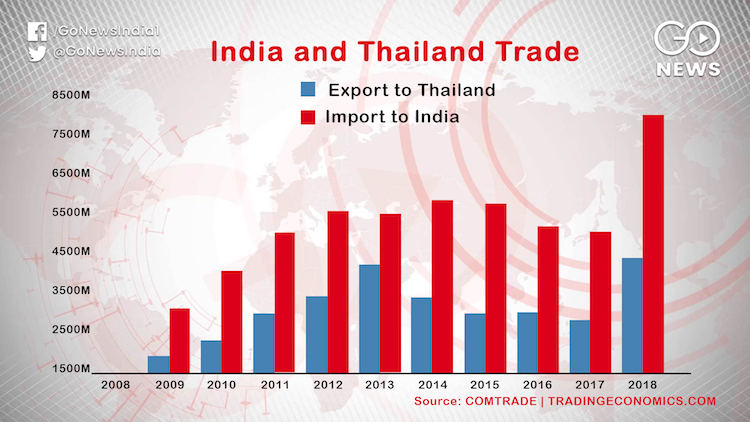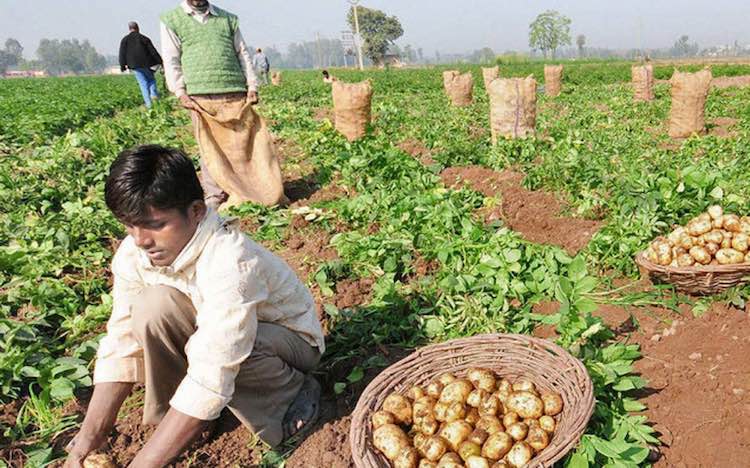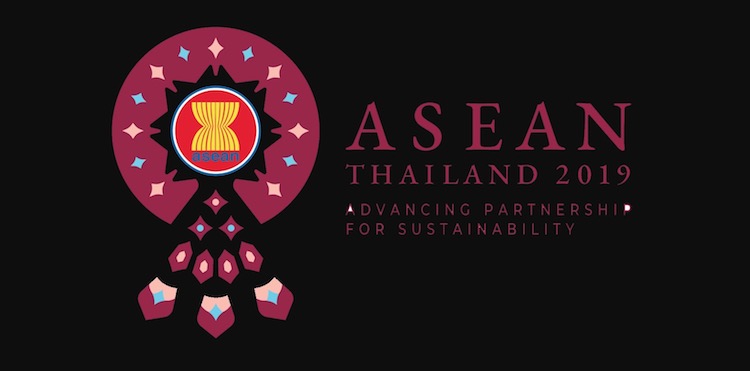PM’s Thailand Tour Under The Cloud of Weak Trade

Despite a spike in trade with Thailand, India’s trade deficit with the East Asian economy continues unabated. Prime Minister Narendra Modi is visiting Bangkok on a 3 day tour where, besides meeting Thai Premier Prayut Chan-o-Cha, he will attend the ASEAN Summit which Thailand chair, the East Asia Summit and RCEP Summit. He will also meet Indian diaspora in a house-full stadium and release a commemorative coin on the 550th birth anniversary celebration of Guru Nanak Dev. A large contingent of Indian media is already in Thailand to cover the events.

But along with high decibel events, what can the Prime Minister achieve in concrete terms when it comes to the economic engagement and trade with east Asian countries, earlier dubbed as ‘Asian Tigers’? A look at the background of India’s trade relations with Thailand has many clues. India has always had a trade deficit with Thailand over the last decade. From 2009 to 2013, India’s exports to the country nearly trebled under a “Looking East” policy. But since 2014, as the country changed its focus to the West again, Indian exports started declining steadily till last year until India started selling heavy machinery and pearls and precious stones . Imports from Thailand were more or less steady in the first 9 years of the last decade until the government decided to import heavy machinery and plastics from Thailand and the imports increased about 50% in 2018. But a closer look at the trade deficit indicates that due to better linkages and infrastructure, Thailand always had an upper hand when it came to trading with India.
India’s trade relations with ASEAN follow similar trends. They saw an uptrend from 2009 and started declining after 2014 with the change of guard in New Delhi. So, ASEAN and East Asia Summit are not likely to provide a breakthrough until India signs a Regional Comprehensive Economic Partnership with ASEAN which has been hanging fire since 2009. The negotiations over tariff parity are time consuming and complex.
Imports from Thailand were more or less steady in the first 9 years of the last decade until the government decided to import heavy machinery and plastics from Thailand and the imports increased about 50% in 2018. But a closer look at the trade deficit indicates that due to better linkages and infrastructure, Thailand always had an upper hand when it came to trading with India.
India’s trade relations with ASEAN follow similar trends. They saw an uptrend from 2009 and started declining after 2014 with the change of guard in New Delhi. So, ASEAN and East Asia Summit are not likely to provide a breakthrough until India signs a Regional Comprehensive Economic Partnership with ASEAN which has been hanging fire since 2009. The negotiations over tariff parity are time consuming and complex.
 For India to strike a balance between its trade priorities with countries as diverse as Singapore and Brunei is a challenge.
A cause for major concern in India is tariff on agricultural trade, as the number of people dependent on agriculture is very large in India compared to ASEAN countries which industrialised rapidly in the 80s.
For India to strike a balance between its trade priorities with countries as diverse as Singapore and Brunei is a challenge.
A cause for major concern in India is tariff on agricultural trade, as the number of people dependent on agriculture is very large in India compared to ASEAN countries which industrialised rapidly in the 80s.
 The difference between tariffs on agriculture is huge - India levies 34% tariff while the ASEAN average is 13%. Hence, out of 498 items which are sought to be on the negative list, 302 are related to agriculture. Signing RCEP will bind India to cheap imports on reduced tariff, affecting local farmers who are already on the streets to protest the government move. An ASSOCHAM document also warned against such a step as early as in 2016.
The difference between tariffs on agriculture is huge - India levies 34% tariff while the ASEAN average is 13%. Hence, out of 498 items which are sought to be on the negative list, 302 are related to agriculture. Signing RCEP will bind India to cheap imports on reduced tariff, affecting local farmers who are already on the streets to protest the government move. An ASSOCHAM document also warned against such a step as early as in 2016.
 When Modi and his team negotiates at the three major Summits, they have to keep on top of their mind some cold facts: India’s GDP is as big as ASEAN put together, but its per capita income is half of those countries. Share of agriculture in GDP for India is about 15%, but nearly 60% of people depend on it for livelihood.
No pomp and pageantry can hide these facts
When Modi and his team negotiates at the three major Summits, they have to keep on top of their mind some cold facts: India’s GDP is as big as ASEAN put together, but its per capita income is half of those countries. Share of agriculture in GDP for India is about 15%, but nearly 60% of people depend on it for livelihood.
No pomp and pageantry can hide these facts

Also Read:
But along with high decibel events, what can the Prime Minister achieve in concrete terms when it comes to the economic engagement and trade with east Asian countries, earlier dubbed as ‘Asian Tigers’? A look at the background of India’s trade relations with Thailand has many clues. India has always had a trade deficit with Thailand over the last decade. From 2009 to 2013, India’s exports to the country nearly trebled under a “Looking East” policy. But since 2014, as the country changed its focus to the West again, Indian exports started declining steadily till last year until India started selling heavy machinery and pearls and precious stones .
 Imports from Thailand were more or less steady in the first 9 years of the last decade until the government decided to import heavy machinery and plastics from Thailand and the imports increased about 50% in 2018. But a closer look at the trade deficit indicates that due to better linkages and infrastructure, Thailand always had an upper hand when it came to trading with India.
India’s trade relations with ASEAN follow similar trends. They saw an uptrend from 2009 and started declining after 2014 with the change of guard in New Delhi. So, ASEAN and East Asia Summit are not likely to provide a breakthrough until India signs a Regional Comprehensive Economic Partnership with ASEAN which has been hanging fire since 2009. The negotiations over tariff parity are time consuming and complex.
Imports from Thailand were more or less steady in the first 9 years of the last decade until the government decided to import heavy machinery and plastics from Thailand and the imports increased about 50% in 2018. But a closer look at the trade deficit indicates that due to better linkages and infrastructure, Thailand always had an upper hand when it came to trading with India.
India’s trade relations with ASEAN follow similar trends. They saw an uptrend from 2009 and started declining after 2014 with the change of guard in New Delhi. So, ASEAN and East Asia Summit are not likely to provide a breakthrough until India signs a Regional Comprehensive Economic Partnership with ASEAN which has been hanging fire since 2009. The negotiations over tariff parity are time consuming and complex.
 For India to strike a balance between its trade priorities with countries as diverse as Singapore and Brunei is a challenge.
A cause for major concern in India is tariff on agricultural trade, as the number of people dependent on agriculture is very large in India compared to ASEAN countries which industrialised rapidly in the 80s.
For India to strike a balance between its trade priorities with countries as diverse as Singapore and Brunei is a challenge.
A cause for major concern in India is tariff on agricultural trade, as the number of people dependent on agriculture is very large in India compared to ASEAN countries which industrialised rapidly in the 80s.
 The difference between tariffs on agriculture is huge - India levies 34% tariff while the ASEAN average is 13%. Hence, out of 498 items which are sought to be on the negative list, 302 are related to agriculture. Signing RCEP will bind India to cheap imports on reduced tariff, affecting local farmers who are already on the streets to protest the government move. An ASSOCHAM document also warned against such a step as early as in 2016.
The difference between tariffs on agriculture is huge - India levies 34% tariff while the ASEAN average is 13%. Hence, out of 498 items which are sought to be on the negative list, 302 are related to agriculture. Signing RCEP will bind India to cheap imports on reduced tariff, affecting local farmers who are already on the streets to protest the government move. An ASSOCHAM document also warned against such a step as early as in 2016.
 When Modi and his team negotiates at the three major Summits, they have to keep on top of their mind some cold facts: India’s GDP is as big as ASEAN put together, but its per capita income is half of those countries. Share of agriculture in GDP for India is about 15%, but nearly 60% of people depend on it for livelihood.
No pomp and pageantry can hide these facts
When Modi and his team negotiates at the three major Summits, they have to keep on top of their mind some cold facts: India’s GDP is as big as ASEAN put together, but its per capita income is half of those countries. Share of agriculture in GDP for India is about 15%, but nearly 60% of people depend on it for livelihood.
No pomp and pageantry can hide these facts
Latest Videos
















